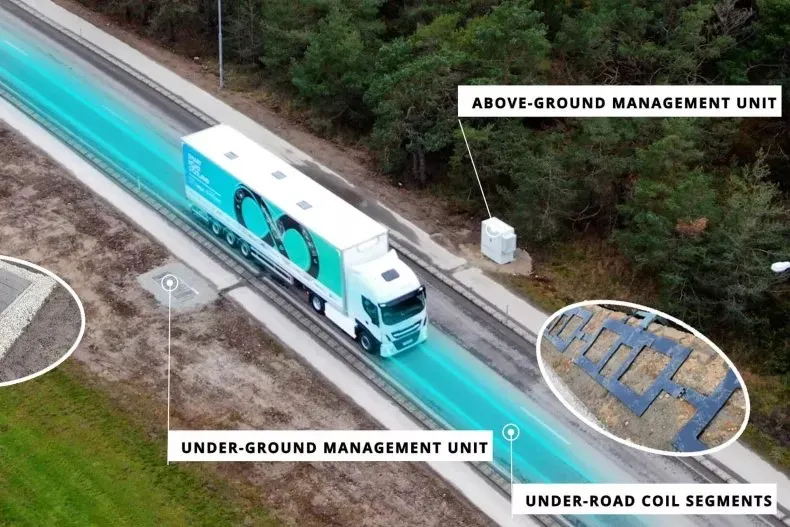Peter Harrop, chairman of independent research and consultancy IDTechEx, considers arguments in favour of solar roads
Nowadays a major trend is the move to off-grid clean energy created by “energy harvesting” to produce electricity where it is needed. This is more controllable and increasingly at lower cost than grid power or diesel gensets, cleaner, and often less subject to interruption. It is taking new forms as revealed in the IDTechEx Research report, “High Power Energy Harvesting 2016-2026”.
Installing photovoltaics in roads seems a daft idea at first. It sounds expensive and unlikely to work unless the surface is cleaned, free of snow and ice and in direct sunlight – all too infrequent in most places.
Indeed, roads are constantly dug up by utilities, repairmen and others. How do you do that with sheets of glass?
Nevertheless, a closer look reveals that most of the problems are easily overcome and even at poor efficiency, that local electricity has viable uses. US start-up Solar Roadways® has a modular system of specially engineered solar panels that can be driven upon but also carry cables. They contain LED lights to create lines and signage without paint and heating elements to prevent snow and ice accumulation. Microprocessors let the panels communicate with each other, a central control station, and vehicles. The glass has a tractioned surface which is equivalent to asphalt. So far they can only support the weight of articulated trucks but eventually these panels will be available for highways, but first will come non-critical applications such as driveways and parking lots.
Solar Roadways has completed two funding contracts with the US Department of Transportation, and has been awarded a third contract in November 2015. An Indiegogo Campaign took things further and the company says on its website that, "Our goal is to modernise the infrastructure with modular, intelligent panels, while producing clean renewable energy for homes and businesses. We’ll be able to charge electric vehicles with clean energy from the sun, first on our solar parking lots and when we have enough highway infrastructure, while driving."
At IDTechEx we do not see solar roads replacing power stations: do that with a field full of solar panels, not transmission and maintenance over long distances on roads. However, they could be excellent for dynamic (in-motion) charging of electric vehicles, possibly coupled with roadside wind turbines or tethered multicopters providing airborne wind energy (AWE).
The bike path that connects the Amsterdam suburbs of Krommenie and Wormerveer is popular: 2,000 cyclists ride its two lanes daily. Back in 2014, TNO made a 70m stretch into the world’s first public road with embedded solar panels. Costing around €3m ($3.6m) and funded mostly by the local authority, this road is made up of rows of crystalline silicon solar cells, encased within concrete and covered with a translucent layer of tempered glass. A non-adhesive finish and a tilt help the rain wash off dirt. The panels produced roughly 30% less energy than those fixed on to roofs but when the path is extended to 100m this year, it is claimed that it will produce enough kilowatts to power three households.
Sten de Wit of TNO predicted that up to 20% of the Netherlands’ 140,000km of road could potentially be adapted, helping to power anything from traffic lights to electric cars. Tests have seen the solar panels successfully carry the weight of vehicles such as tractors.
Not to be outdone, a subsidiary of the French construction giant Bouygues is joining in. Minister of ecology and energy, Ségolène Royal, announced the French government would pave 1,000km (621 miles) of road with photovoltaic panels in the next five years. The project aims to supply electricity to 5 million people – about 8% of France’s population.
The road photovoltaics are being produced by French company Colas, which is calling the project Wattway. The panels are composed of stacked photovoltaic cells that ensure resistance and tyre grip. They do not require destruction of existing roadways: they can simply be added on to them. There are issues beyond cost and servicing pipes and so on beneath them.
When their heating is on, animals will lie on them and be crushed by traffic. The heating will not cope with extreme cold or with deep snow or mud. To work at all the heating will have to be connected to the grid or to expensive, short-lived, batteries needing regular maintenance unless designs improve.
Solar roads have competition. The US is funding research into roads that harvest movement to make electricity but IDTechEx considers moving parts in such an application to be potentially troublesome. All the same, although piezoelectric walkways have not proved commercial, Pavegen is having some modest success with electrodynamic ones.
Solar roads such as Colas’s Wattway could be the right way
Peter Harrop, chairman of independent research and consultancy IDTechEx, considers arguments in favour of solar roads Nowadays a major trend is the move to off-grid clean energy created by “energy harvesting” to produce electricity where it is needed. This is more controllable and increasingly at lower cost than grid power or diesel gensets, cleaner, and often less subject to interruption. It is taking new forms as revealed in the IDTechEx Research report, “High Power Energy Harvesting 2016-2026”.
April 26, 2016
Read time: 4 mins







